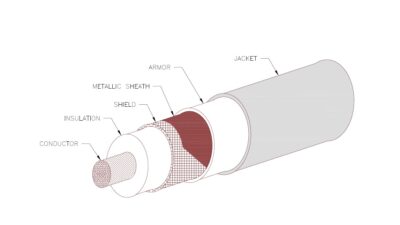AE companies are doing well in this climate, but can find themselves getting into trouble by not being financially responsible.

In our rapidly evolving business climate where the rising tide no longer appears to be floating every single boat, the consequences of financial management sins can be greatly magnified for AE companies, posing significant threats to the financial health and long-term viability of unsuspecting organizations. From neglecting cash flow management to underestimating project costs to relying too much on outdated business models, these missteps can impede growth, erode profitability, and undermine competitiveness. In this article, we delve into the first five of these ten financial management sins, highlighting their adverse effects and providing actionable guidance on how you can avoid them.
Sin #1: Neglecting cash flow management
When I served as an adjunct professor at Suffolk University—a small, private university in downtown Boston—I would ask the students on the first day of class, “What is the most important thing in business?” Invariably, they would give the same answers many of our clients do today—people, brand, client relationships, etc. While all of those are valuable assets, cash is king of the business jungle. It’s the air businesses breathe. We may not want to admit it, but sometimes in the pursuit of profitability, we can lose focus on cash flow management. Remember, you can be profitable and bankrupt at the same time. Failure to accurately forecast cash inflows and outflows leads to cash shortages during critical periods. Poor cash flow management can hinder a firm’s ability to meet financial obligations, pay employees and suppliers, and invest in growth opportunities…and you can take it from there.
How to avoid the trap: Implement robust cash flow forecasting mechanisms, regularly monitor cash flow statements, negotiate favorable payment terms with clients and suppliers, and maintain adequate cash reserves. It’s really a discipline thing more than anything else.
Sin #2: Underestimating project costs
Firms that consistently underestimate project costs also happen to consistently blow budgets and crater profitability. Whether caused by insufficient planning, scope creep, or rose-colored glasses, underestimating project costs not only erodes profit margins, but often damages client relationships and tarnishes reputations.
How to stay on the straight and narrow: Get religious about conducting comprehensive project cost estimations, ditch the rose-colored glasses and account for contingencies and unforeseen expenses in place of using “The Force,” closely monitor project progress and costs, and give clients bad news early about any changes that may impact the budget.
Sin #3: Overreliance on billable hours
Many AE firms we’ve worked with over the years rely heavily on billable hours as their main revenue stream. While billable hours are important, overreliance on this model can limit revenue scalability and profitability. Depending primarily, if not solely, on billable hours can lead to revenue volatility, staff burnout from excessive workloads, and missed opportunities for alternative revenue streams that can generate greater fees while expending less labor.
What to do instead: Diversify revenue streams by offering value-based pricing, exploring more fixed-fee arrangements, pursuing retainer agreements, and developing complementary services as added value. If your clients “will never go for it,” maybe it’s time to consider expanding your firm’s horizons.
Sin #4: Inadequate cost control
Times have been good for AE firms — as in historically good. Cash is flowing and plentiful, backlog is strong, and for many of you, it seems like there’s no end in sight. Yet, therein lies the problem. Because we currently find ourselves in the land of plenty, we may not be as discerning about expenses as we otherwise would. Why not fly in everyone from near and far for yet another boondoggle at some fancy resort even though we just met two months ago? Why not turn a blind eye to suspiciously high expense reports? Why not ignore write-offs? For firms that fail to implement effective cost control measures, door prizes include operational inefficiencies, wasteful spending, reduced profitability, and the systematic undermining of long-term financial sustainability.
How to stay on the straight and narrow: Establish clear budgeting processes, track expenses rigorously, implement cost-saving initiatives, regularly review overhead costs, and foster a culture of cost-consciousness within the organization.
Sin #5: Ignoring technology investments
“We can get by with what we have. Besides, our clients don’t value technology anyway. Relationships are what really matters.” If you think along these lines, be prepared to eat rival dust, if you aren’t already. Neglecting investments in technology infrastructure, software tools, and digital capabilities hinders productivity, stunts innovation, and reduces competitiveness, and all but guarantees eventual obsolescence in an increasingly digital landscape.
How to get with it: Assess company and client technology needs; invest in appropriate software tools for project management, design, and collaboration; provide staff training on new technologies; and continuously evaluate and adopt emerging technologies to enhance firm capabilities.
– Morrissey Goodale is a CFE Media and Technology content partner.



